Allied Energy Corporation, (OTCMKTS:AGYP), an oil and gas explorer with several leases, is getting very close on two of their leases in North Texas, Annie Gilmer and Green Leases respectively.
Tuesday, the company sent out 6 tweets detailing work at the Green Lease. The tweets showed three videos of a disposal well, photos of their drilling rig, as well as a video of a new surface hole.
The drilling rig is especially promising because that’s a harbinger for future production.
Whenever AGYP releases tweets, the stock tends to perform well shortly after, so today could be big for the stock.
In fact, last time they released a large string of tweets on July 6th the stock hit its recent high of 83 cents shortly after.
Currently trading at $0.4175 (8.11.2021 8:30 am) the stock has quite a bit of headroom on the chart.
Here are the tweets, and a breakdown of what they mean for the uninitiated.
AGYP’s Green Lease disposal well videos:
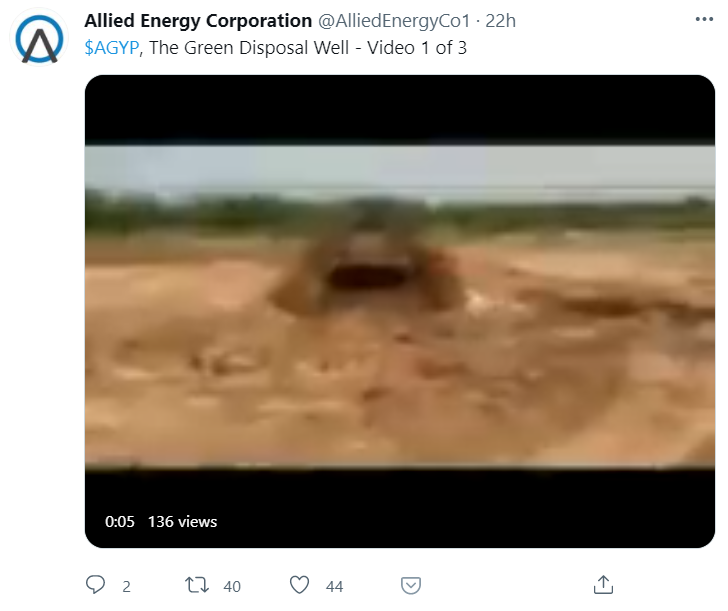
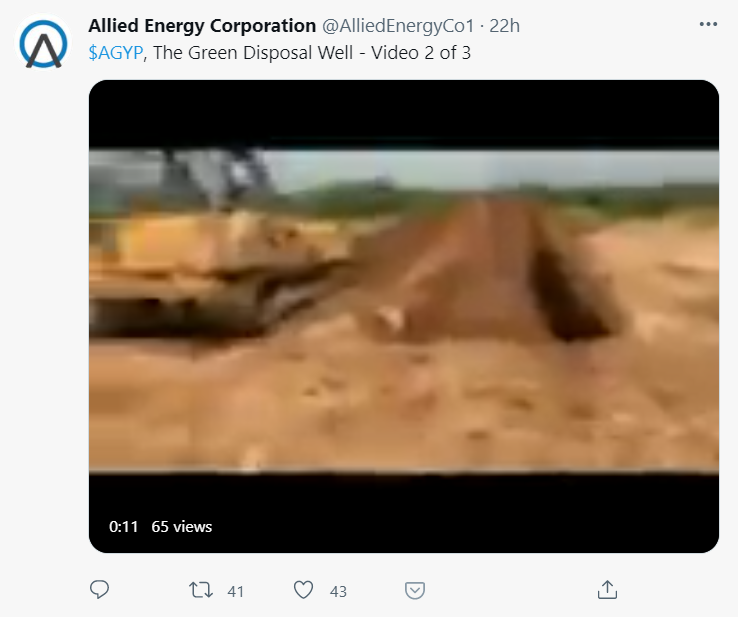
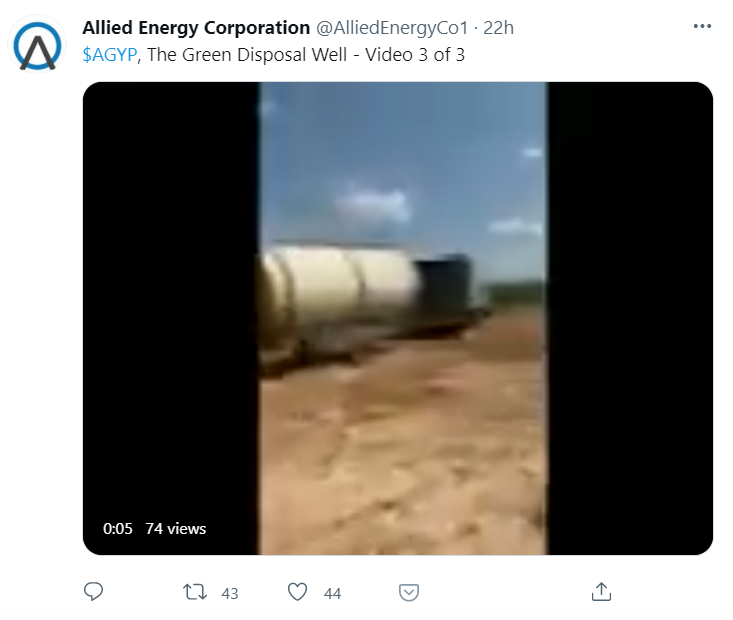
About Disposal Wells
A Disposal Well is a type of well which is used to dispose of waste fluids safely into the ground without toxicating the freshwater aquifers or underground water. The well is usually a depleted oil or gas well which has been exhausted and before abandoning it, it acts as a Disposal Well.
AGYP’s Green Lease drilling rig:
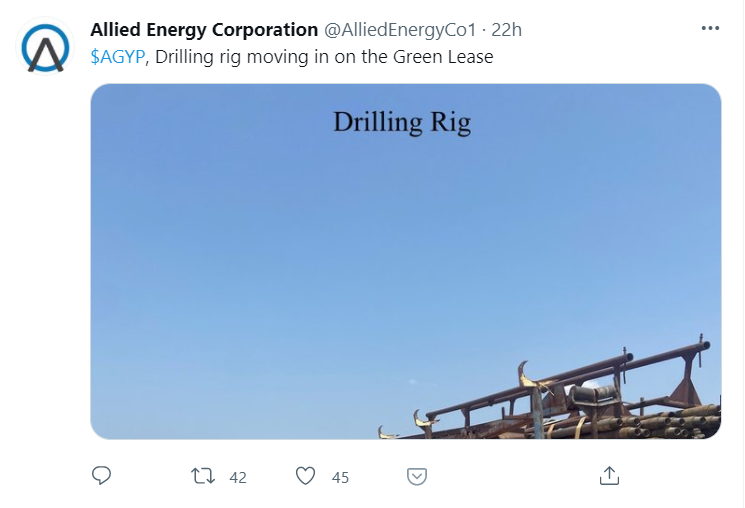
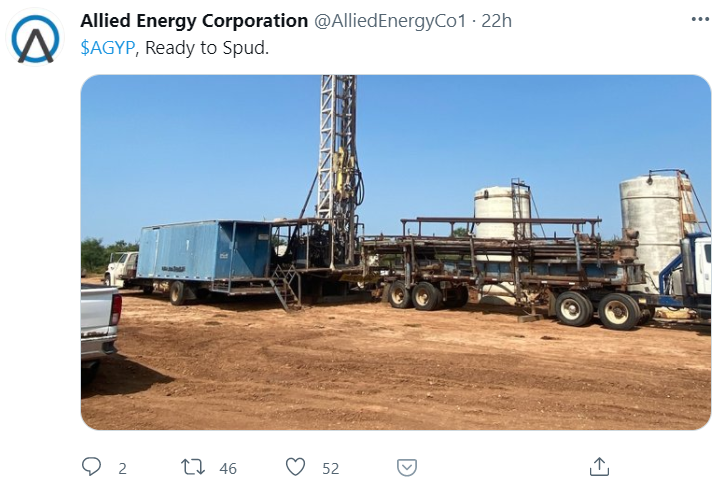
About Drilling Rigs
The machine used to drill a wellbore. In onshore operations, the rig includes virtually everything except living quarters. Major components of the rig include the mud tanks, the mud pumps, the derrick or mast, the drawworks, the rotary table or top drive, the drillstring, the power generation equipment, and auxiliary equipment. Offshore, the rig includes the same components as onshore, but not those of the vessel or drilling platform itself. The rig is sometimes referred to as the drilling package, particularly offshore.
AGYP’s Green Lease Surface Hole:
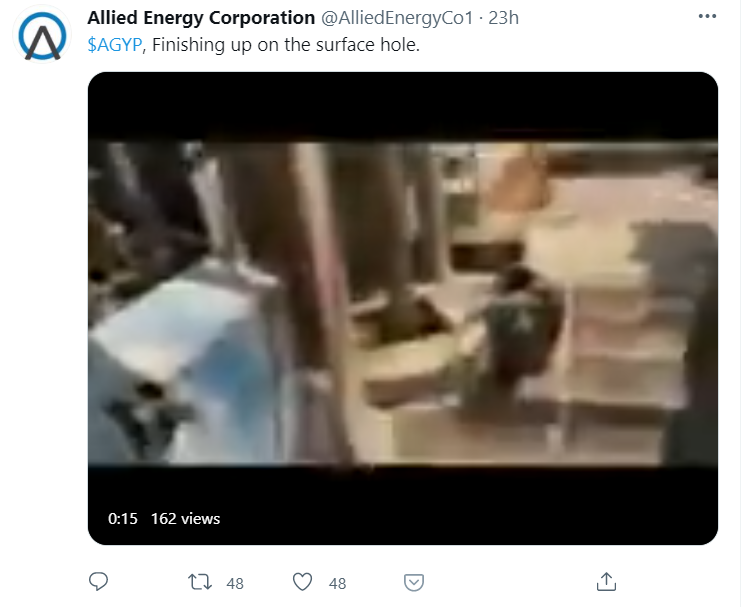
About Surface Holes:
When a well is spudded in, a large-diameter drill bit is used to drill to a predetermined depth. This is for the purpose of drilling the surface hole. The surface hole is lined with casing. The casing protects aquifers that may contain freshwater, provides a mounting place for the blowout preventer and serves as the support for the production casing that will be placed in the wellbore if the drilling program is successful. The surface hole may be several hundred or several thousand feet deep. When the predetermined depth is reached, the drill string will be removed from the wellbore. Steel casing of the proper diameter is inserted. Sufficient cement is pumped down the surface casing to fill the space between the outside of the casing and the wellbore all the way to the surface. This is to ensure the protection of freshwater aquifers and the security of the surface casing. The casing and the cement are tested under pressure for a period of 12 hours before drilling operations may be resumed. A piece of equipment known as a blowout preventer is attached at the top of the surface casing. This device is required to control the well in the event that abnormal pressures are encountered in the borehole that cannot be controlled with drilling fluid. If high-pressure gas or liquid blows the drilling fluid out of the wellbore, the blowout preventer can be closed to confine the gas and fluids to the wellbore.
